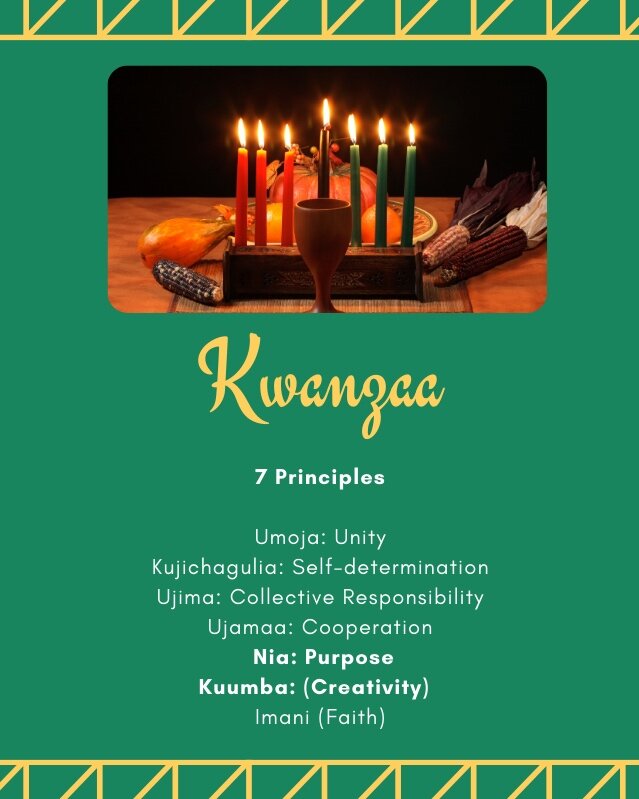Kwanzaa and Mindful Cooking
by Michelle Beadle Holder, PhD
Published: December 31, 2020.
Most people are familiar with Kwanzaa, but may not know its origins and purpose. If you are one of those people, you’re not alone.
I was first introduced to Kwanzaa after attending my college’s Black Student Union (aka Sankofa U Nia) holiday celebration. Even years following that event, I didn’t quite fully understand the purpose of Kwanzaa. It wasn’t until last year that I decided to do some research on the topic to learn more.
So what is Kwanzaa and what does it have to do with food or cooking?
An African American Cultural Celebration
The word Kwanzaa is derived from the Swahili phase, matunda ya kwanza, which means the first fruits of harvest.
Seven days each year, from December 26th to January 1st, many people of African descent celebrate Kwanzaa in the United States. More recently, some people of African descent in the Caribbean celebrate Kwanzaa.
The celebration was created by Black Studies Professor Dr. Karenga in 1966 at a time quite similar to now. During the late 1960s people of African descent struggled against many forms of racial inequalities including police brutality and worked to affirm Black humanity, unity, and culture.
Some of the goals of Kwanzaa include:
Affirming and restoring African cultural traditions
Celebrating a communal non-heroic holiday
Introducing and practicing the seven principles of Kwanzaa
Purpose of food during Kwanzaa
Since Kwanzaa is a harvest celebration, it’s no surprise that food plays an important role. Below are three main ways that food is used during this cultural celebration.
Gratitude for Harvest and Abundance: Those celebrating Kwanzaa often create table settings with food. Some choose foods that are often eaten in many African countries and across the African diaspora, like peanut, rice, millet, okra, and black-eyed peas. Others choose foods that have significant meaning to their family. You may even choose to use food that you have at hand or that you enjoy.
It Takes a Village to Raise a Child: In many African traditions, all adults are viewed as having an important role to play in the protection, safety, and well-being of children whether or not they are a biological parent. During Kwanzaa, an ear of corn is placed at the mat on the table to represent each child in the household. If there are no children in the home, two ears of corn are used to symbolize the commitment to care for children in your extended family and community.
Cook and Eat Together: On the last day of Kwanzaa there is often a great feast. Often people cook one-pot meals like gumbo and jambalaya from the American South. Some also cook Jerk Chicken which has its origin in Jamaica. Other dishes are cooked and shared during this celebration.
The core principle celebrated on the fifth day is Nia, which means purpose. The sixth day focuses on Kuumba or creativity.
Cooking with Purpose (Nia)
To honor Nia (purpose), the fifth day of Kwanzaa, I invite you to join my mother and me as we have a conversation about her reason for cooking (see video below). This video offers one of the key insights to Mindful Cooking. It is our hope that it encourages you to look closely at the often taken for the granted activity of cooking.
Co-Create with Us (Kuumba)
I also invite you to co-create with us to honor Kuumba or creativity, the sixth day of Kwanzaa.
Begin by asking yourself and another family member:
What do I/you love about cooking?
If you don't cook, gently ask, "What would inspire me/you to cook?".


Michelle is the founder of Food at the Center. She is a medical sociologist and former college professor who was inspired by her mother’s determination to take charge of her health and life through food. Michelle used the framework of mindfulness to teach undergraduates at the University of Maryland. She has also used mindfulness to develop programs to improve the health and well-being of Black or African American women and their loved ones. Michelle was born in Jamaica and currently resides in Columbia, Maryland.